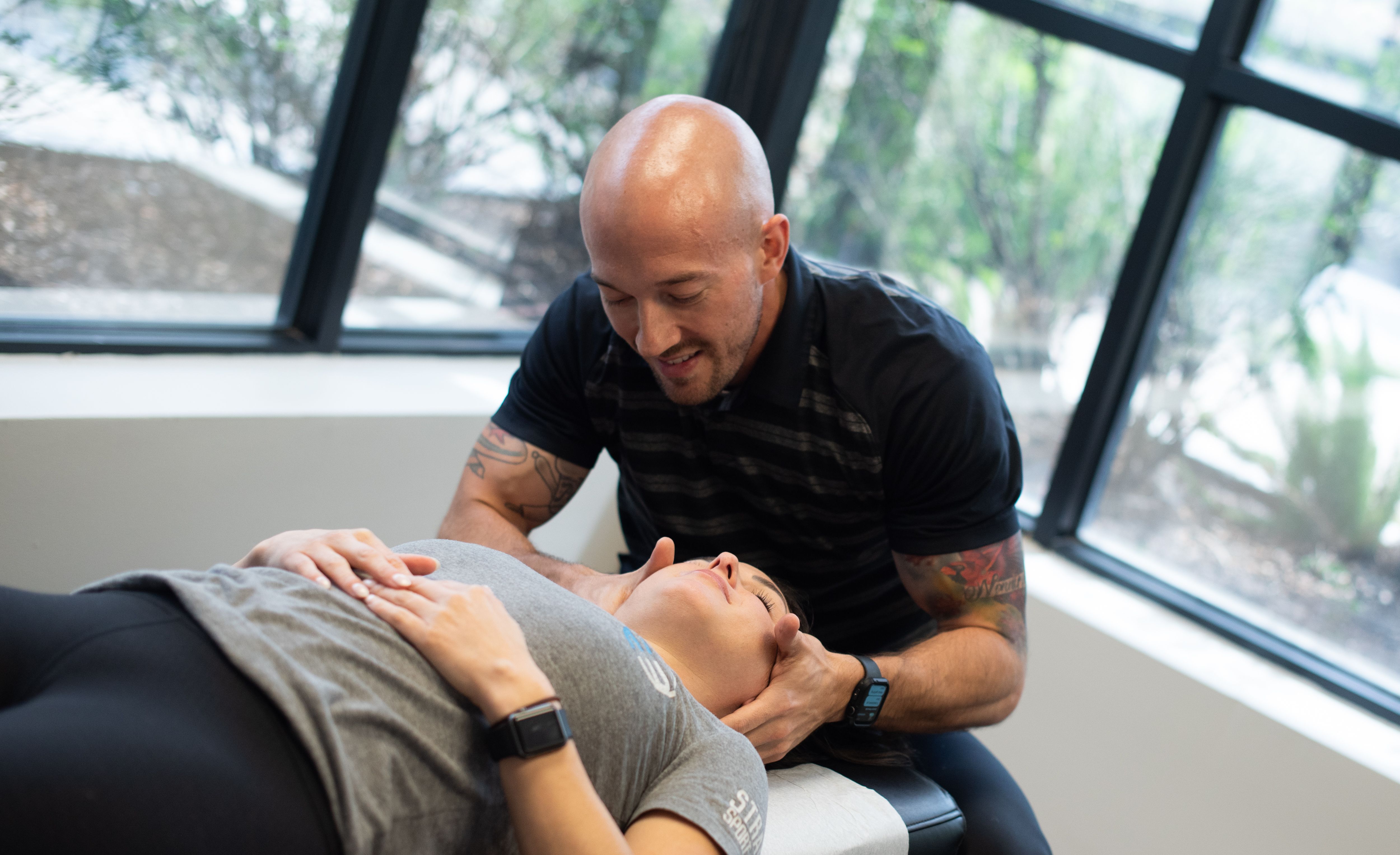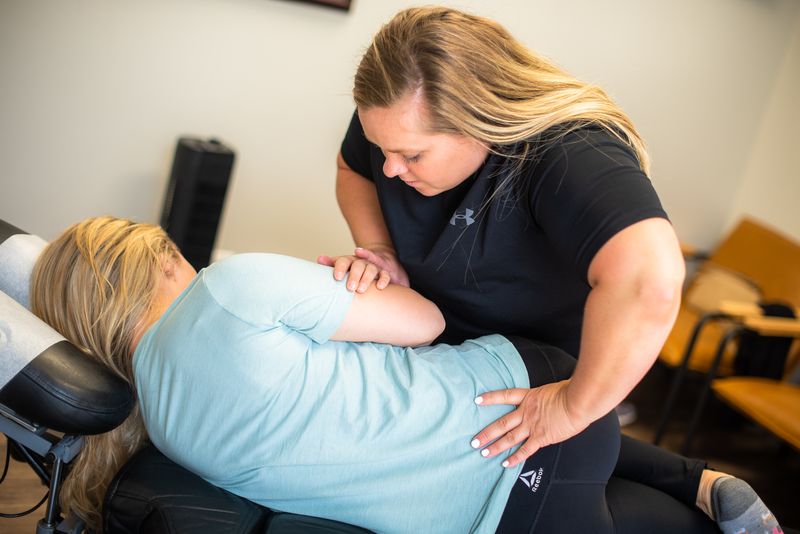Call Us Now!
Phone 210.837.8244
Chiropractic Care
The effects of posture on health is becoming more evident. My father has been a Physical Therapist for 37 years now and would always correct my posture when I was growing up. I wish I knew then how important it really is. In fact, in 1994 John Lennon et al. in American Journal of Preventive Medicine stated that "Spinal pain, headache, mood, blood pressure, pulse, and lung capacity are among the functions most easily influenced by posture. The corollary of these observations is that many symptoms, including pain, may be moderated or eliminated by improved posture." [1]
 One of the most common postural problems is termed Forward Head Posture (FHP). The repetitive use of computers, TV, video games, cell phones, backpacks, and trauma have all forced the body to adapt to this forward flexed posture. In other words, the body will adapt to a repetitive posture. According to Renee Calliet, MD, if the head weighs 10 pounds and the center of the ear sits directly over the center of the shoulder, the load on the spine and it's tissue is only 10 pounds. However, if the head is translated forward, it's weight will increase by 10 pounds for every inch forward of translation. In effect, if the center of the ear is 3 inches forward from the center of the shoulders, the weight of the head on the spine and it's discs, joints, and nerves is 30 pounds! [2] Kapandji, in Physiology of Joints Vol 3, stated, "For every inch of Forward Head Posture, it can increase the weight of the head on the spine by an additional 10 pounds."
One of the most common postural problems is termed Forward Head Posture (FHP). The repetitive use of computers, TV, video games, cell phones, backpacks, and trauma have all forced the body to adapt to this forward flexed posture. In other words, the body will adapt to a repetitive posture. According to Renee Calliet, MD, if the head weighs 10 pounds and the center of the ear sits directly over the center of the shoulder, the load on the spine and it's tissue is only 10 pounds. However, if the head is translated forward, it's weight will increase by 10 pounds for every inch forward of translation. In effect, if the center of the ear is 3 inches forward from the center of the shoulders, the weight of the head on the spine and it's discs, joints, and nerves is 30 pounds! [2] Kapandji, in Physiology of Joints Vol 3, stated, "For every inch of Forward Head Posture, it can increase the weight of the head on the spine by an additional 10 pounds."
It should be easier to understand now why FHP puts a strain on your neck and upper back muscles. It is easier for the muscles to ache and fatigue.Because the neck and shoulders have to carry this weight all day in an isometric contraction, this causes neck muscles to lose blood, become hypoxic, get damaged, strain, fatigue, and cause pain. When spinal tissues are subject to a significant load for a sustained period of time, they deform, and undergo remodeling changes that could become permanent. Its not just the muscles that suffer. FHP has been shown to flatten the normal neck curve, resulting in disc compression, damage, and early arthritis. [3] Some evidence exists that postural positions can effect the nerve tissue by altering blood flow to the spinal cord. As the head goes forward, the spinal cord gets tractioned. This can lead to a long list of symptomatology.

At Stratton Sport & Spine, we utilize products from CBP, Pettibon, and the CLEAR Institute to address postural restoration. Contrary to what many Physicians will say, a loss of cervical curve is not a normal x-ray finding. We are able to improve posture with the use of these products, specific chiropractic adjustments, soft tissue treatment & strengthening exercises. Ultimately, our goal is to restore proper posture and function of the Central Nervous System.
Private Pay Pricing:
- Initial Exam & Treatment - $185-$250
- Follow-up Treatments - $100-$125
- Re-Exam & Treatment - $100
- Exam only - $100
- Dry Needle only with an adjustment (10 min visit) - $65
- "SNAP" Appointments - $50 (must be an existing patient or have received an initial exam @ SSS)
[1] John Lennon et al. Postural and Respiratory Modulation of Autonomic Function Pain & Health. APJM Vol 4 No. 1 January 1994.
[2] Calliet Renee. Soft Tissue Pain & Disability. Philadelphia: FA Davis Co., 1977.
[3] Gore DR et al. Roentgenographic findings of the cervical spine in asymptomatic people. Spine 1986;6:591-694.
Services
- HIVAMAT
- EPAT- Extracorporeal Pulse Activation Technology
- Orthobiologic Medicine (coming soon)
- Trigger Point Dry Needling
- Blood Flow Restriction (BFR) Training
- Fascial Distortion Model (FDM)
- Chiropractic Care
- Active Release Technique
- Kinesio Taping
- Graston Technique
- Selective Functional Movement Assessment (SFMA)
- Spinal Decompression Services
- NormaTec Recovery System


